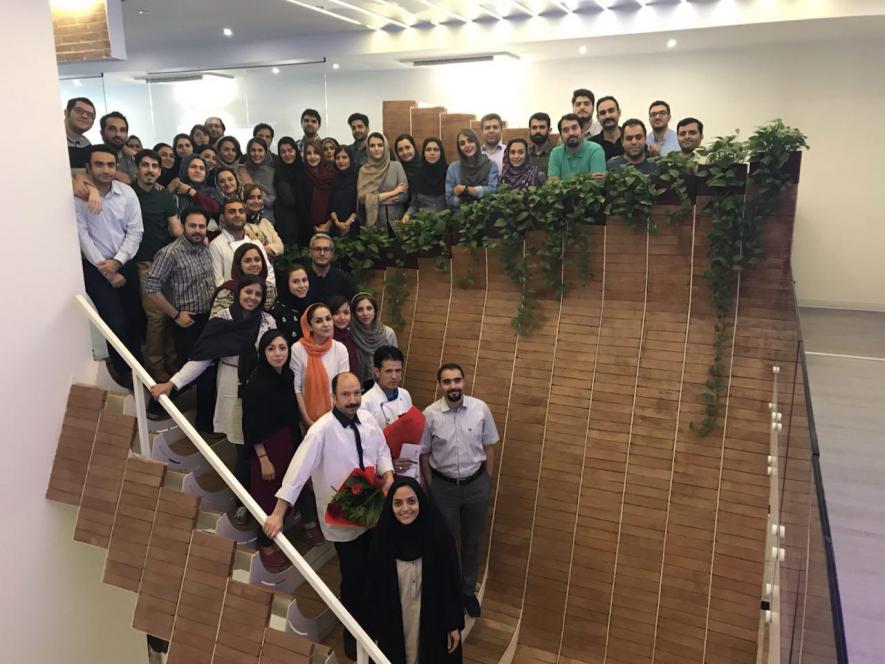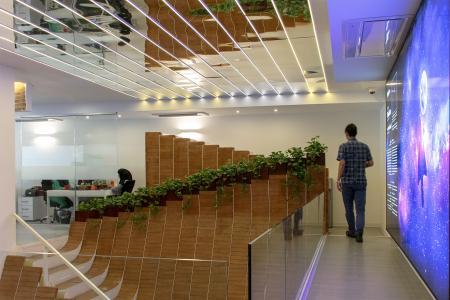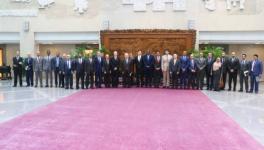How Iranian Versions of Twitter, FB, YouTube are Filling the Void Left by Sanctions, Censorship

Man is a social animal – this maxim is indeed evergreen. It spurs boundaries, abhors sanctions and it stands well in post-sanctions Iran, where a group of young entrepreneurs- Mohammad Javad Shakouri Moghadam, Mahdi Shakouri Moghadam, Mohammad Fazlollahi- are connecting with the world through social media, but with a difference. They have come up with their own version of social networking sites in the wake of an official ban in the Islamic Republic of Iran on Twitter, Facebook and YouTube.
While these entrepreneurs have created a unique platform for socialising with inter and intra social groups, they have consciously tried to keep it off vigilantism of all sorts -- be it from the political class or business conglomerates.
This initiative – Saba Idea (www.sabaidea.com) – has earned laurels from a cross-section of Iran’s population. The technologies applied by the App developer, which runs several social networking websites, are sufficiently protected and help in disseminating information. It protects propaganda and filters uncouth and unnecessary messages.
“Our story began in 2004 with a group of three young technocrats. We started with high hopes and aspirations to create something of value for Iranian internet users. The first fruit of our endeavour was the advent of Cloob (cloob.com) – the first Iranian version of Facebook,” Ali Tehraninasr, Saba Idea’s vice president (business development), told NewsClick, at the company’s headquarters in Tehran.
Cloob – as the founder claims – has three million registered users and 2.5 million maximum time spent in a month. Like Facebook, it also provides identity protection for verified accounts of officials and celebrities.
Following the first successful experiment, SabaIdea expanded its services by creating SabaVision – a digital marketing agency to monetise Cloob’s traffic.
“In only a few years, SabaVision grew into Iran’s largest digital marketing platform,” he said.

SabaIdea bought MihanBlog – a blogging platform – in 2007 and further developed it into a powerful blogging tool, which at present has 15 lakh blogs and one crore users.
“It was in 2010, when we were attempting to develop a video-sharing feature on Cloob that we thought it had such a huge potential that it could be an independent service. Hence, Aparat (www.aparat.com) – a video-sharing platform which is an alternative to YouTube – was born. Aparat soon grew exponentially and became our hero product,” Tehraninasr said.
It fetches – as the website claims – 33 million unique visitors. So far, nine million videos are available on the platform, which claims to have five million App installations and hold first position in Alexa ranking. (Alexa is an Amazon.com company that specialises in giving analytical insights into the digital world and ranks website traffic).
Further to their efforts to build specialised and popular social media, SabaIdea then created Lenzor (www.lenzor.com) – an Iranian photo-sharing service. As an online VOD (video on demand) platform, Filimo (www.filimo.com) is their latest product, which was developed in early 2015.
“This way, our story goes on…,” said the young entrepreneur, who is in his late 30s.
The founders claim that 15% of their users are from outside Iran and that they provide services in almost all languages of the world.
Tehraninasr claimed the SabaIdea group of websites does not censor content but strictly follows community standards. They have “zero tolerance” for sexually-explicit content, even advertisements.
“Our users, who belong to different ideologies, have all the freedom. They even promote anti-government propaganda. We don’t remove them. Anyone can create a video channel on Aparat, like on YouTube. We provide space to politicians belonging to different outfits. But yes, the uploaded content is moderated to ensure that no nudity goes live,” he said.
The company even promotes “good videos” uploaded by random users.
Asked about the revenue model, Tehraninasr said, “Our major source of earning is advertisements. We charge on scroll advertisements and for promotions and boosting services. We also have a revenue sharing system for original content. But there is a flat rate and the money is given according to viewership.”
Asked about data security, he said, “We ensure that our user data remains 100% secure without any privacy breach. We don’t do any kind of location tracking. Though Cloob has a login condition for users, Aparat has nothing like that. We don’t do any social mapping. We are against it.”
Has the sites been developed to counter social networking giants? “No, not at all. We have not developed the cluster of websites to counter other networks that are popular in the world. Our products are for Iran and Iranians,” he added.
Iran has a rapidly flourishing technology market and a huge market for start-ups, which are prompting Iranians who have gone to the United States, the United Kingdom and Canada to return to their homeland.
Though US sanctions have had an impact on foreign investments to an extent, yet it has not completely stopped the inflow. Several foreign firms are taking risks by investing in the country without caring what will happen if they want to do business in the US. For instance, Mozando, Bamilo and Taxi Yaab (Iranian versions of eBay, Amazon and Uber, respectively) have been launched by a joint venture between German firm Rocket Internet and South African telecom company, MTN.
The incumbent government in Iran, led by President Hassan Rouhani, appears to be against online censorship in the country. He has made repeated statements against the ban on Twitter, Facebook and YouTube. In fact, he is considered to be an advocate of free access to information. At a conference in 2014, he had said, “The era of the one-sided pulpit is over. We should see cyberspace as an opportunity. Why do we have so much fear? We should trust our youth.”
But Rouhani is not the sole decision-maker in Iran, and cannot lift the ban. All decisions about the internet are taken by the Supreme Council of Virtual Space, which is controlled by the supreme leader Ayatollah Ali Khamenei, who has ultimate power in all state matters. He makes final decisions on economy, environment, foreign policy, education, national planning and everything else in the Islamic Republic.
However, Iranians do access their Twitter, Facebook and YouTube accounts with help from proxy websites or virtual private network services (VPNs). Though the authorities have introduced more subtle filtering algorithms, these don’t always work.
According to The Guardian newspaper internet and smartphone penetration in Iran is quite high. About 70% of the country’s 80 million population is under 35, and at least half of Iranians have access to a smartphone, it cited officials as saying. While the report said there were conflicting views on the number of internet users, but as per Internet World Stats, Iran has more than 46 million internet users (57.2% penetration), although not all of them have regular access.
(The writer was in Iran on a visit hosted by the Iranian Cultural Centre in Delhi.)
Get the latest reports & analysis with people's perspective on Protests, movements & deep analytical videos, discussions of the current affairs in your Telegram app. Subscribe to NewsClick's Telegram channel & get Real-Time updates on stories, as they get published on our website.
























